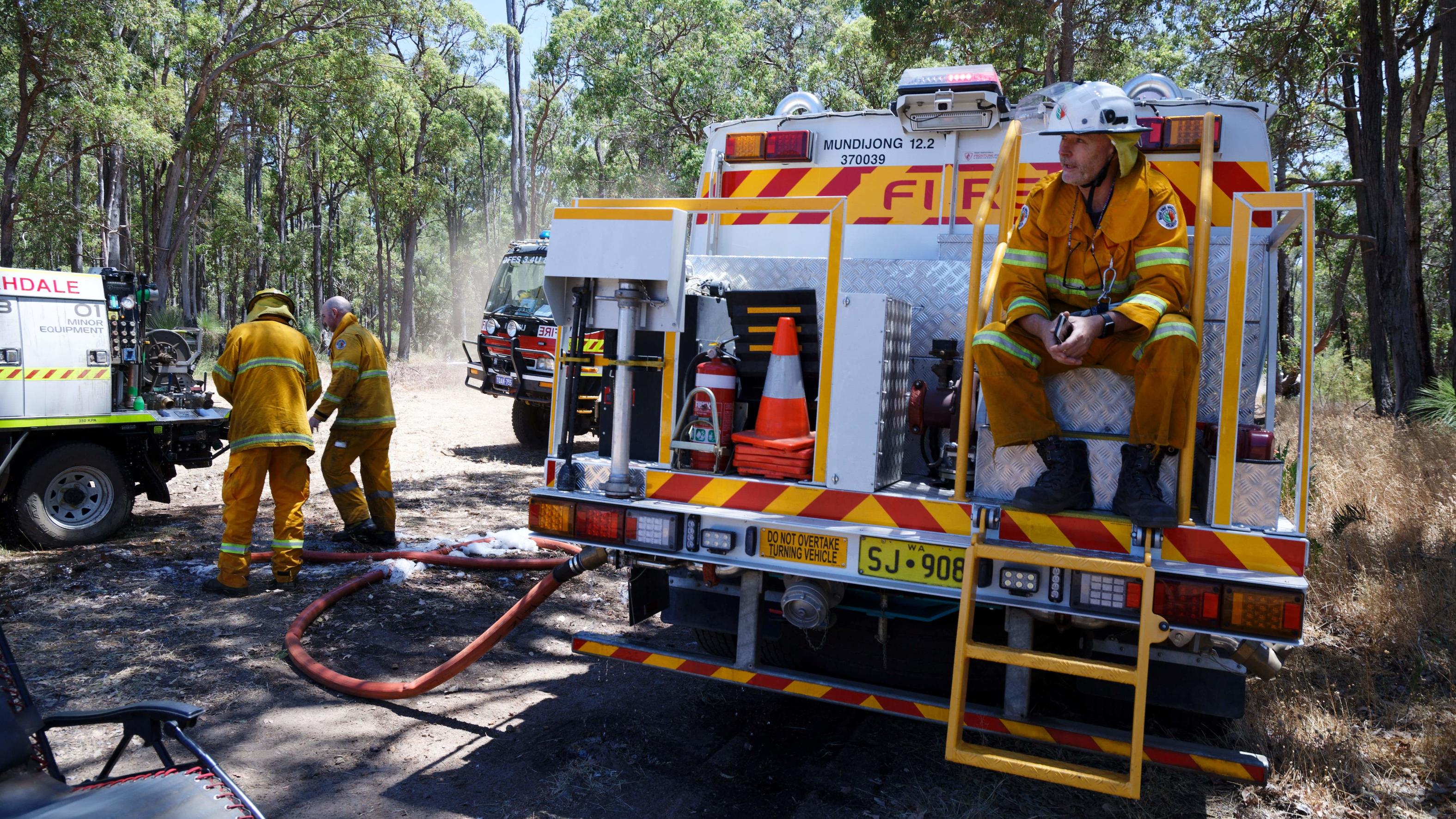 In this file photo dated Feb 2, 2022, a firefighter sits on his tanker truck awaiting further instructions as the team conduct mop up operations after a bushfire that threatened homes was extinguished in the suburbs of Perth. (PHOTO / AFP)
In this file photo dated Feb 2, 2022, a firefighter sits on his tanker truck awaiting further instructions as the team conduct mop up operations after a bushfire that threatened homes was extinguished in the suburbs of Perth. (PHOTO / AFP)
BILLEN CLIFFS VILLAGE, Australia — Smoke sweeps through the treetops as a fire consumes the dense undergrowth of the Australian winter bush.
To the uninitiated, the fire might appear to be dangerous, but it is a controlled cool burn or "cultural fire", ridding the land of dangerous underbrush using Indigenous techniques passed down over thousands of years.
Anastasia Guise, a resident of Billen Cliffs Village - a rural community in northern New South Wales state some 800 km distant from Sydney - has tapped Jagun for help
The technique - taught by the Jagun Alliance Aboriginal Corporation (Jagun)- is a more discriminate method than standard hazard reduction burning used by rural fire services. It has been experiencing a revival in recent years and its use this year comes as meteorologists warn of a scorching summer that could lead to devastating fires.
READ MORE: Australian officials warn of bushfire threat as heatwave grips Sydney
Australians, scarred by the catastrophic 2019-2020 'black summer' of bushfires that destroyed an area the size of Turkey, are also mindful of the recent soaring summer temperatures in Europe and Canada that led to blazing wildfires.
Cultural burning involves burning smaller areas of vegetation, allowing animals and birds to move away from the heat. Burning also occurs at cooler times, such as in the evening and care is taken to protect trees, in particular very old 'scar trees' that have stood for hundreds of years and which have been used by Aboriginal people for cultural purposes.
"Aboriginal people consider the canopy, the top of the trees sacred so we don't want any fire in the top of the canopy because what that do is takes out all the potentially, old trees, lets all the light in and we get this really bad regrowth so we're trying to break that cycle," said Richard Geddes, a Jagun programme manager.
Anastasia Guise, a resident of Billen Cliffs Village - a rural community in northern New South Wales state some 800 km distant from Sydney - has tapped Jagun for help.
"I think after the 2019-2020 bushfires a whole lot of people right across Australia, including here where we are in northern New South Wales became really conscious of the disruptive force of out-of-control wildfire, and they began to understand some of the things that led to that,” said Guise.
 This file photo dated April 6, 2022 from the New South Wales (NSW) Department of Environment shows Robert Kelly conducting a traditional Aboriginal smoking ceremony in the Mungo National Park. (PHOTO / AFP)
This file photo dated April 6, 2022 from the New South Wales (NSW) Department of Environment shows Robert Kelly conducting a traditional Aboriginal smoking ceremony in the Mungo National Park. (PHOTO / AFP)
"One of the keys that was missing, I think, for a lot of people was cultural burning," she added.
The Jagun initiative also creates opportunities for local Aboriginal people to gain practical skills while maintaining ancient methods of caring for the land.
READ MORE: Australia's leaders unmoved on climate action after bushfires
With a grant from the Australian government’s National Emergency Management Agency, Jagun is also separately running 20 community bushfire recovery workshops in the region.
Michael Smith, a landowner in nearby Kippenduff who lost nearly 75 percent of his property in the 2019-2020 bushfires, also called in Jagun for help ahead of the summer season.
"It’s part of life. Part of the Australian bush, it burns," said Smith.



